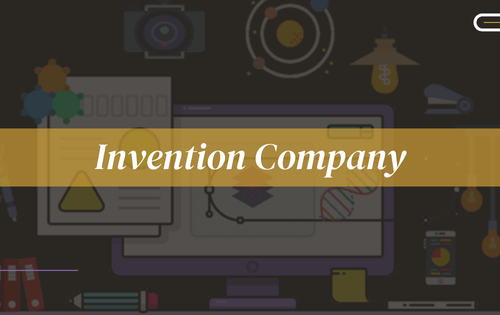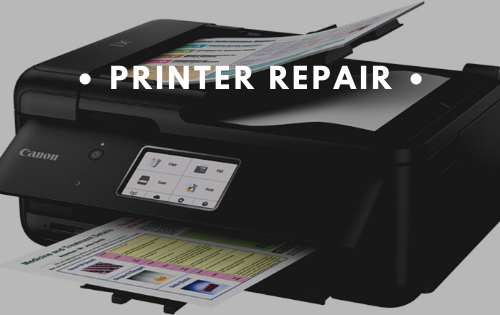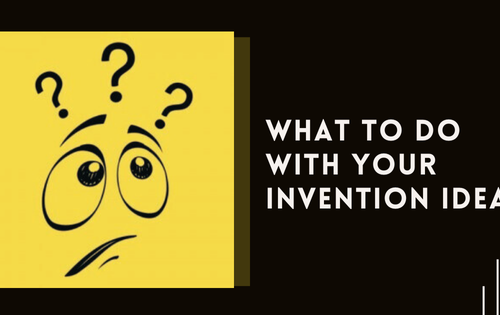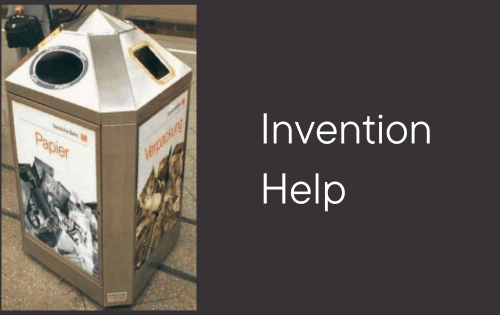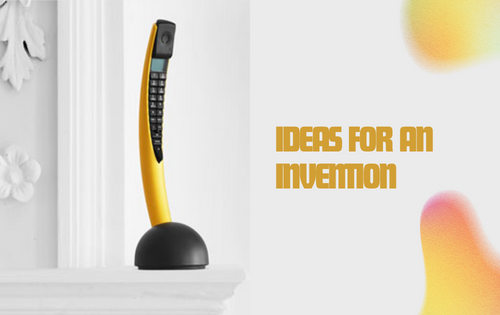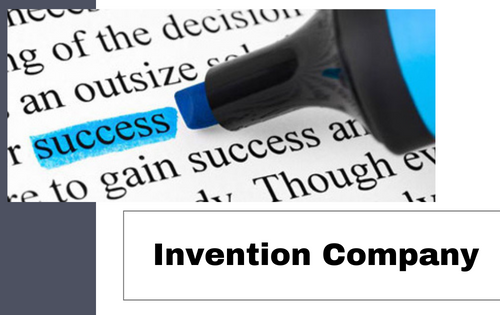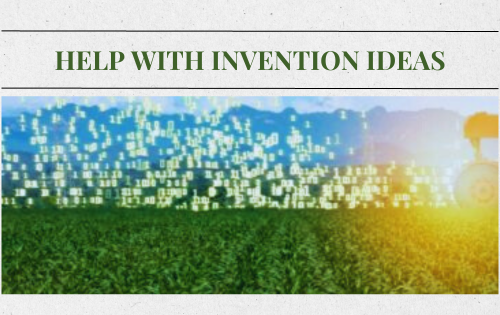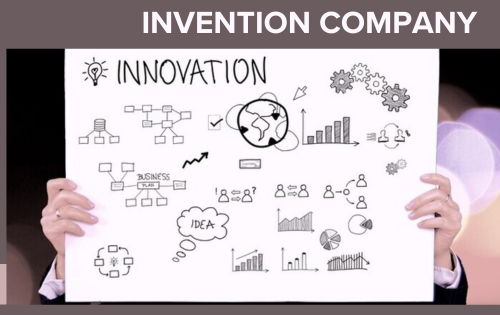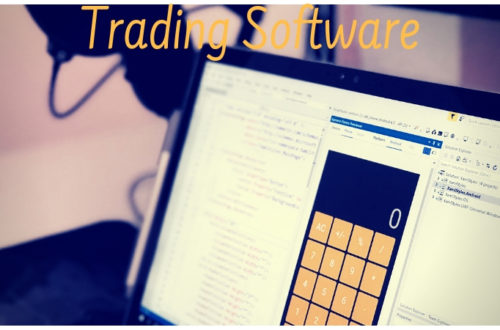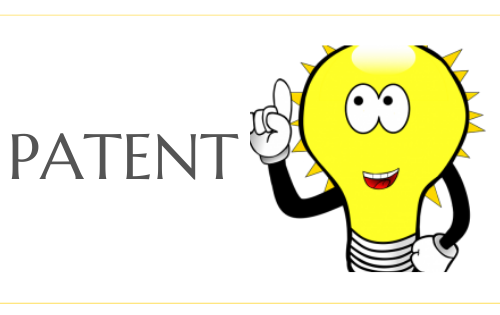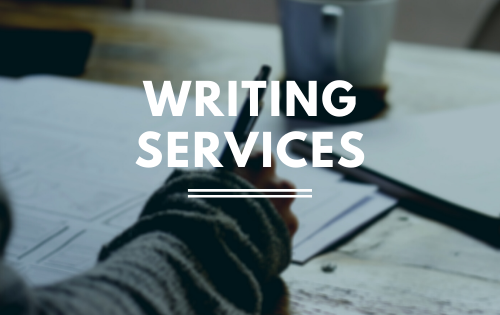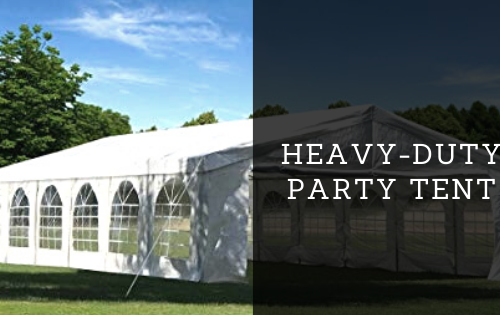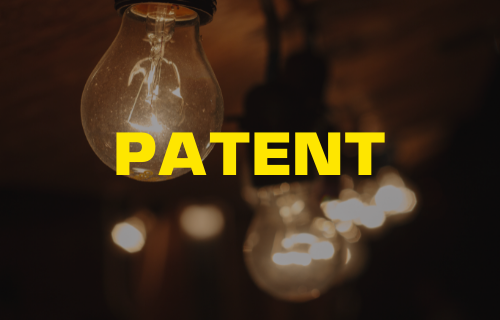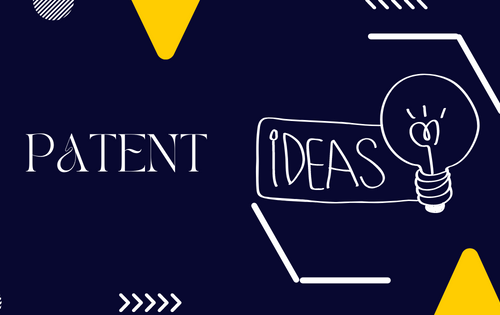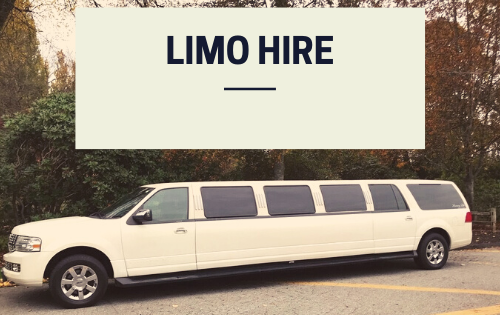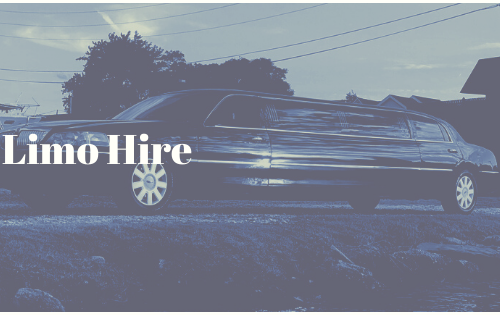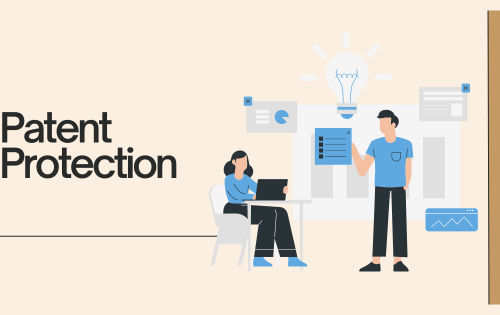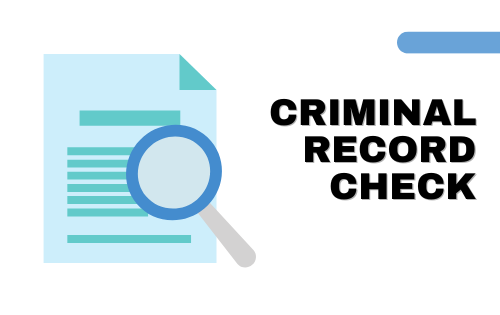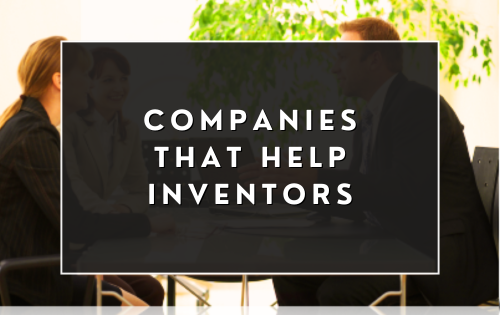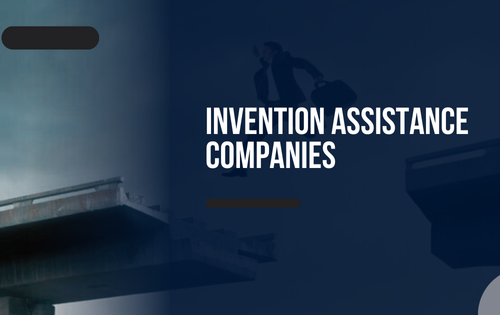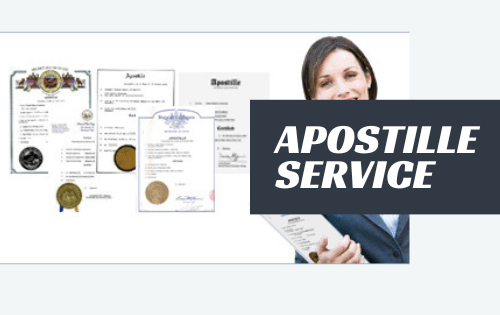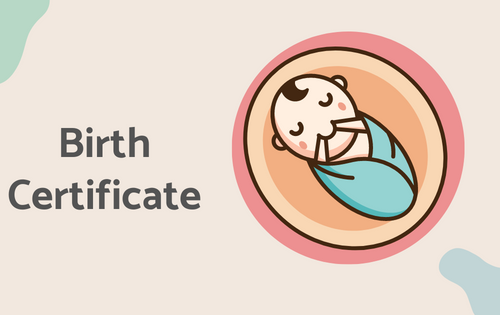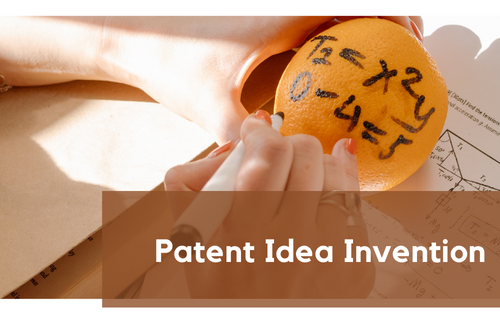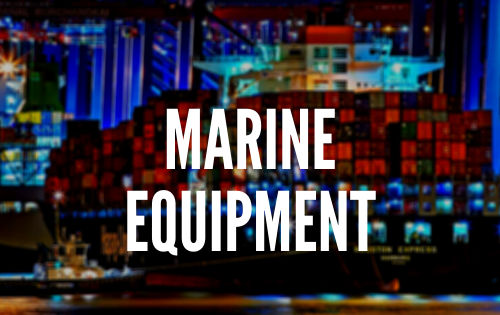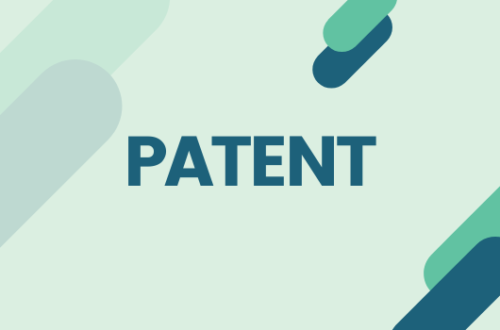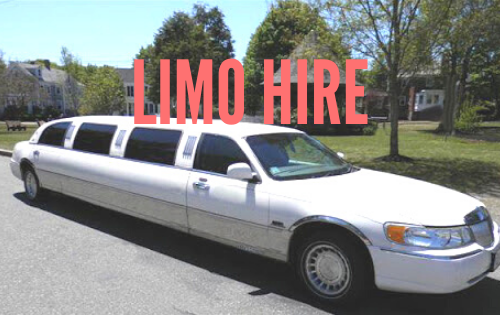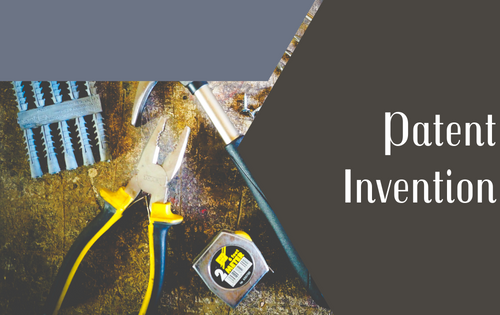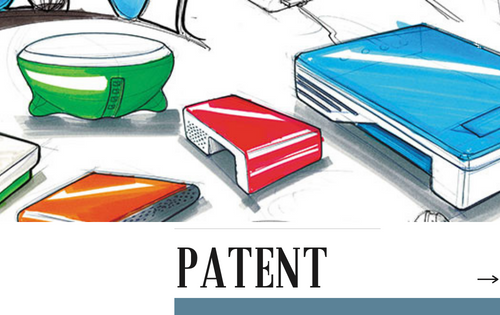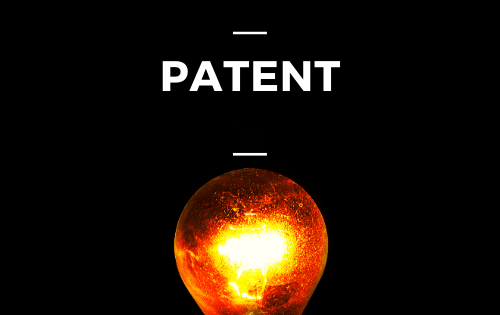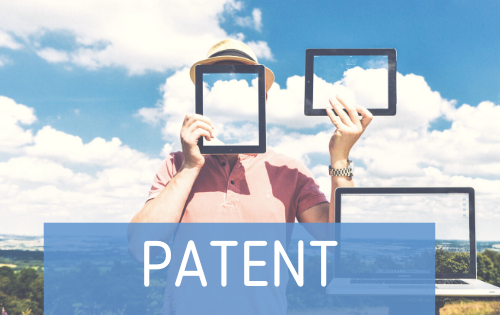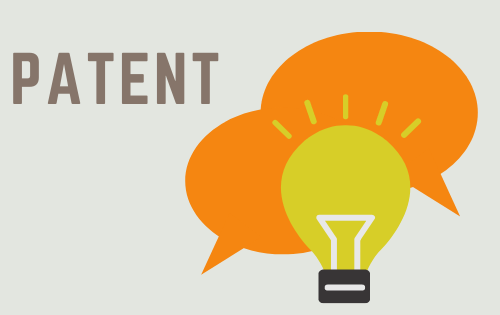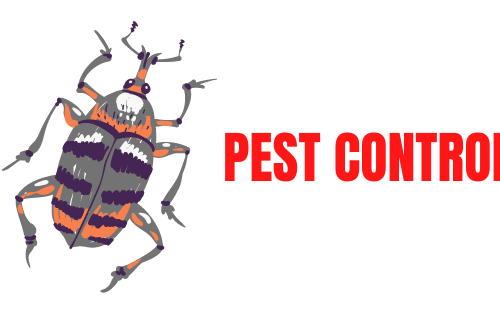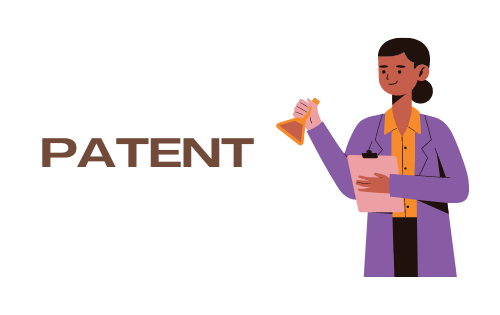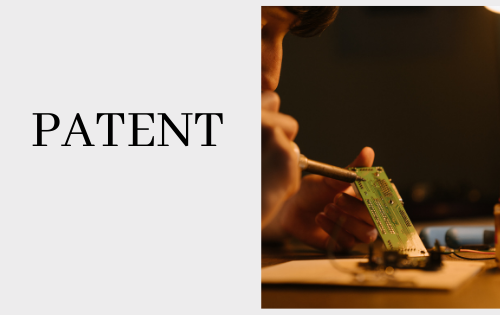Law
-
How Inventors Can Leverage Invention Assistance Companies Like InventHelp in the Patenting Process
In the competitive world of innovation, inventors often face significant challenges in bringing their ideas to life. The journey from conceptualizing an invention to obtaining a patent and ultimately commercializing the product can be complex and daunting. In this regard, invention assistance companies such as InventHelp can play a crucial role in guiding inventors through the patenting process, offering valuable support, expertise, and resources.
InventHelp invention company specializes in providing a range of services to inventors, including patent referrals, prototype development, licensing assistance, and marketing support. One of the primary ways in which inventors can benefit from working with companies like InventHelp is by gaining access to a network of experienced professionals who can provide guidance and support throughout the patenting process. This includes patent attorneys, prototype developers, market researchers, and licensing experts, among others. By leveraging the expertise of these professionals, inventors can ensure that their inventions are thoroughly protected and positioned for success in the marketplace.
Expert Legal Guidance and Support
The patenting process can be intricate, requiring a deep understanding of patent law, documentation requirements, and potential legal challenges. InventHelp can assist inventors in navigating the complexities of the patenting process by connecting them with experienced patent attorneys who can provide legal guidance, conduct patent searches, and prepare and file patent applications. By partnering with skilled patent attorneys, inventors can ensure that their inventions are afforded the necessary legal protection and that their patents are drafted and prosecuted effectively.
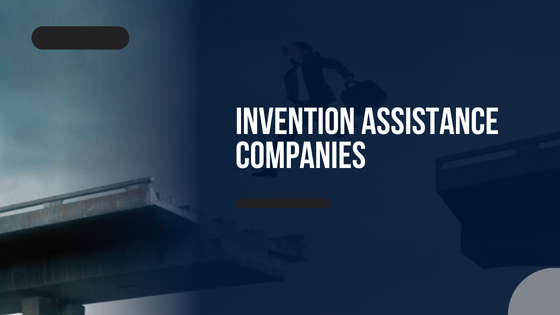
Prototyping Excellence
Moreover, invention assistance companies like InventHelp can aid inventors in developing prototypes and models of their inventions, which can be instrumental in demonstrating the functionality and feasibility of the product. Prototyping is a critical step in the patenting process, as it allows inventors to test and refine their ideas, showcase their inventions to potential investors or licensees, and provide concrete evidence of their innovation. Through their network of experienced prototype developers and designers, InventHelp can help inventors bring their ideas to life by creating professional prototypes that accurately represent the invention’s features and benefits.
Marketing and Licensing Assistance
In addition to legal and prototyping support, InventHelp inventor services also provides assistance in marketing and licensing inventions. Through strategic marketing initiatives and networking opportunities, the company can help inventors showcase their inventions to potential buyers, licensees, and investors. This can be vital in securing licensing agreements or partnerships that enable inventors to bring their inventions to the market and generate revenue. By leveraging InventHelp’s marketing expertise and industry connections, inventors can enhance the visibility and commercial potential of their inventions as you can see from https://inventhelpcanada.blob.core.windows.net/idea-protection-services/index.html.
Educational Resources and Support
Furthermore, InventHelp offers valuable educational resources and workshops to help inventors understand the patenting process, intellectual property rights, and best practices for commercializing inventions. By equipping inventors with knowledge and insights into the innovation landscape, InventHelp empowers them to make informed decisions and navigate the complexities of the patenting process confidently.
In Conclusion
Invention assistance companies like InventHelp can be instrumental allies for inventors seeking to navigate the patenting process and bring their inventions to market. By leveraging the expertise, resources, and support offered by these companies, inventors can streamline the patenting process, protect their intellectual property, and position their inventions for success. From legal guidance and prototype development to marketing support and educational resources, InventHelp provides a comprehensive suite of services to assist inventors at every stage of the patenting journey. As innovators continue to seek ways to protect and commercialize their inventions, the role of invention assistance companies in facilitating this process is set to become increasingly crucial.
-
The Numerous Benefits of Licensing an Invention
Licensing an invention can be a game-changer for inventors looking to bring their creations to the market. It provides numerous advantages that can make it the best route for many innovators. Let’s explore the benefits of licensing an invention and why it can be a strategic and lucrative decision.
Access to Resources and Expertise
When an inventor licenses their invention to a company, they gain access to the resources and expertise of that company. This can include manufacturing capabilities, distribution networks, marketing know-how, and financial resources. By partnering with a company that has experience and established infrastructure in the relevant industry, inventors can leverage these resources to bring their invention to a wider audience in a more efficient and cost-effective manner.
Companies like InventHelp play a crucial role in this process by connecting inventors with potential licensees and guiding them through the licensing process, providing essential support and expertise.
Reduced Risk and Financial Burden
Licensing an invention can significantly reduce the financial burden and risk associated with bringing a new product to market. By partnering with a licensee, the inventor can shift the financial responsibility for manufacturing, marketing, and distribution to the licensee, reducing the need for upfront investment and ongoing operational costs. This can be especially beneficial for inventors who may not have the financial means to independently launch and promote their invention.
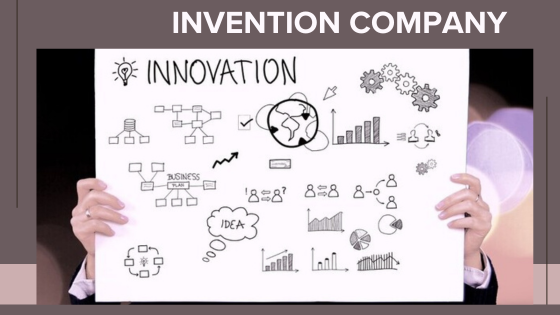
Expertise in Commercialization
Many inventors are passionate about their creations but may lack the expertise in commercializing them. Licensees often have extensive experience in bringing products to market and can navigate the complexities of commercialization, including regulatory compliance, market research, and competitive analysis. By aligning with a licensee, the inventor can benefit from the partner’s expertise in areas critical to the success of the product.
Expansion of Market Reach
By licensing their invention to a company with an established market presence, inventors can tap into a wider customer base than they could have reached on their own. This can lead to increased sales and market penetration, enabling the invention to realize its full potential within the marketplace. Additionally, licensees often have established distribution channels that can expedite the reach of the invention to retailers and consumers.
Focus on Innovation
Licensing an invention allows inventors to focus on what they do best – innovating. By entrusting the commercialization and distribution aspects to a licensee, inventors can devote more time and energy to developing new ideas and refining their existing inventions. This can lead to a continuous cycle of innovation and creativity, with inventions being licensed out to maximize their potential while the inventor moves on to the next big idea.
In Conclusion
The numerous benefits of licensing an invention make it a compelling option for many inventors. From gaining access to resources and expertise, to reducing financial risk and expanding market reach, licensing offers a strategic and lucrative pathway for bringing inventions to the market. InventHelp invention company plays a valuable role in guiding inventors through the licensing process, facilitating partnerships, and providing essential support. By leveraging the advantages of licensing, inventors can realize the full potential of their inventions while focusing on what they do best – innovating.
-
InventHelp: Your Partner in Bringing Your Invention Ideas to Life
In the realm of innovation and creativity, the journey from a groundbreaking idea to a tangible invention can be riddled with challenges and complexities. From navigating the intricacies of intellectual property protection to realizing the commercial potential of an invention, aspiring inventors often encounter a myriad of obstacles on their path to success. This is where the invaluable support and guidance offered by trusted partners such as InventHelp come into play, empowering inventors to bring their imagination to life and navigate the intricate landscape of invention commercialization.
How to Get Started with Your Invention Idea with InventHelp – For more than 35 years, InventHelp has been at the forefront of empowering inventors to transform their raw ideas into innovative, marketable products. Embracing a philosophy that nurtures innovation and creativity, InventHelp provides a comprehensive suite of services that cater to inventors at every stage of their journey. Whether an individual has just conceived a revolutionary idea or developed a prototype ready for market entry, InventHelp offers the expertise, resources, and support necessary to navigate the complexities of invention commercialization and intellectual property protection.
Nurturing Innovation and Creativity
Continuing on the journey of invention development and commercialization, InventHelp serves as a steadfast ally to inventors by offering a holistic approach to the entire spectrum of invention development. From conducting preliminary patent searches and facilitating the patent application process to developing professional prototype models and creating marketing materials, InventHelp’s expert team guides inventors through every stage, providing them with the support necessary to translate their ideas into tangible products.

Intellectual Property Protection: A Cornerstone of Success
Central to the success of any innovative endeavor is the robust protection of intellectual property. The team at InventHelp recognizes the critical importance of safeguarding an inventor’s unique concepts and inventions. With a deep understanding of patent law and intellectual property rights, InventHelp assists inventors in securing patents, trademarks, and copyrights, ensuring that their creations are shielded against unauthorized use and infringement. By offering access to a vast network of legal professionals and patent agents, InventHelp empowers inventors to navigate the intricacies of intellectual property protection with confidence.
Bridging the Gap Between Creativity and Commercial Viability
InventHelp’s commitment to turning inventive ideas into commercially viable products extends beyond the initial stages of invention development. Recognizing the significance of market evaluation, product refinement, and brand positioning, InventHelp works tirelessly to bridge the gap between creativity and commercial success. Leveraging their industry expertise and market insights, the team at InventHelp assists inventors in refining their inventions, identifying potential licensing opportunities, and establishing strategic partnerships, thereby paving the way for successful market entry and sustainable growth.
Conclusion
In a world where inventive ideas possess the potential to redefine industries and improve lives, the role of a trusted partner like InventHelp cannot be overstated. By serving as a beacon of support, guidance, and expertise, InventHelp empowers inventors to navigate the complexities of invention commercialization, protect their intellectual property, and realize the full potential of their creative endeavors as explained on https://www.reddit.com/r/Likedbyme/comments/1b6ipdf/new_inventors_key_things_you_need_to_know_about/. As aspiring inventors embark on their journey to transform imagination into reality, the partnership with InventHelp offers a roadmap to success, enabling them to bring their inventive ideas to life and contribute to a future shaped by innovation and ingenuity.
-
How InventHelp Helps Inventors in Licensing Their Creations
Inventors pour their creativity and ingenuity into creating innovative products, but bringing these creations to market can be a daunting task. This is where InventHelp steps in, providing a comprehensive suite of services aimed at supporting inventors through the often complex, multifaceted process of licensing their inventions. With over 35 years of experience, InventHelp provides expertise in various aspects crucial for the successful licensing and commercialization of innovations.
Understanding the Licensing Process
Licensing an invention involves granting permission to a business or individual to manufacture and sell a product under specified terms. It allows inventors to benefit financially from their creations without the costs and risks associated with bringing a product to market by themselves. However, navigating this process requires a solid understanding of both the technical and legal nuances, and reliable connections with industry players.
Connecting with Industry Professionals
One of the key ways through which InventHelp supports inventors is by leveraging its extensive network of industry professionals and potential licensees. This network includes marketing representatives, production companies, and intellectual property experts, all of whom play critical roles in transforming a concept into a commercially viable product. InventHelp actively facilitates introductions and meetings, enabling inventors to pitch their ideas directly to those who have the capability to bring them to market.
Legal Expertise and Negotiations
Securing favorable licensing terms is one of the most challenging aspects of the process. InventHelp’s team of experienced professionals ensures that inventors are well-represented during negotiations. They offer guidance on critical aspects such as royalty rates, patent rights, territorial exclusivity, and contract duration. This expertise is crucial in ensuring that inventors do not lose control over their creations and receive fair compensation for their ideas.
Comprehensive Support Services
InventHelp’s support begins with the protection of the invention. By providing assistance with patent searches and applications, they help inventors secure intellectual property rights, which are a prerequisite for any licensing agreement. They work with an extensive network of patent attorneys who can navigate the complexities of patent law efficiently.
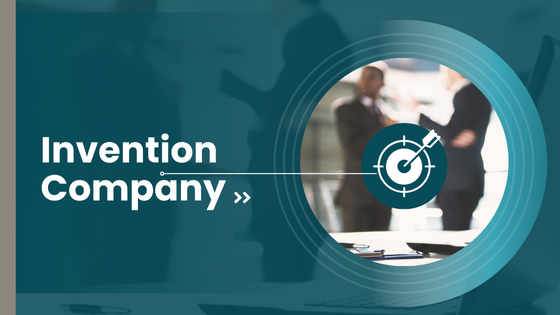
Marketing and Promotional Assistance
Beyond legal support, InventHelp also aids inventors in developing effective marketing strategies to attract potential licensees. They create detailed promotional materials, including 3D renderings, videos, and brochures, that effectively communicate the benefits and potential of the invention. These materials are then showcased at trade shows, industry events, and private presentations, providing significant exposure for the invention.
Navigating the Commercial Landscape
Commercialization involves understanding market trends, consumer preferences, and competitive landscapes. InventHelp assists inventors in conducting thorough market research, developing business strategies, and planning product rollouts. This holistic approach ensures that inventors are not only able to license their creations but also position them advantageously in the marketplace.
Continued Support and Development
InventHelp’s commitment to inventors goes beyond the initial licensing agreement. They offer continued support in areas such as product development, manufacturing, and additional marketing efforts. They advocate for ongoing improvement and adaptation of the product to meet market demands and sustain its commercial success.
Can InventHelp assist with patent protection? Yes, InventHelp can assist with patent protection. They have a team of experienced patent attorneys who can help you file for a provisional patent application or utility patent application. They also offer free consultations to discuss your invention and determine if it is patentable.
Conclusion
InventHelp provides a robust framework of support for inventors seeking to license their creations. From connecting with industry professionals to providing legal expertise, marketing assistance, and ongoing development, their comprehensive approach ensures that inventors can focus on innovation while maximizing the commercial potential of their inventions. For inventors ready to take the next step, partnering with InventHelp represents a strategic move towards turning visionary ideas into tangible, market-ready products.
-
Patent Assistance Companies: Making the Patent Process Easier for Inventors
The process of obtaining a patent for an invention can be long, complex, and overwhelming for many inventors. From conducting a patent search to preparing and filing the necessary paperwork, the procedures involved in securing a patent can be daunting, especially for those who are not familiar with the legal intricacies of intellectual property protection. However, patent assistance companies, such as InventHelp, have emerged as valuable resources for inventors looking to navigate the complex patent process with ease and efficiency.
InventHelp – A Leader in Patent Assistance Services
InventHelp, a leading patent assistance company, has gained considerable recognition for its commitment to guiding inventors through each step of the patenting journey, as described in this article – Top tips to get patent referral services for your invention idea — InventHelp. With a team of experienced professionals versed in patent law and intellectual property regulations, InventHelp offers a comprehensive range of services designed to simplify the often daunting process of patent acquisition. From initial idea assessment and patent search to the preparation and submission of patent applications, InventHelp strives to streamline and expedite the complex process of obtaining a patent, allowing inventors to focus on the creative and innovative aspects of their work.
Preliminary Assessment of Patentability
One of the most valuable services provided by patent assistance companies is the preliminary assessment of an invention’s patentability. Many inventors may be unsure whether their invention is eligible for patent protection or whether similar patents already exist. By leveraging their expertise and access to comprehensive patent databases, patent assistance companies can conduct thorough searches to determine the novelty and patentability of an invention. This initial step can save inventors valuable time and resources by identifying potential patent obstacles early in the process.

Guidance in Drafting and Filing Patent Applications
Furthermore, patent assistance companies offer invaluable support in preparing and filing patent applications. Crafting a well-structured, detailed, and legally sound patent application demands a thorough understanding of patent law and a mastery of technical and legal language. For inventors without a legal background, attempting to navigate this process alone can be overwhelming. Patent assistance companies alleviate this burden by guiding inventors through the application drafting process, ensuring that all necessary technical and legal requirements are met and that the application effectively communicates the unique aspects of the invention.
Navigating Examination Challenges
In addition to simplifying the patent application process, patent assistance companies also play a pivotal role in liaising with patent examiners and addressing any inquiries or objections that may arise during the examination of the patent application. This involves responding to office actions, providing clarifications, and making necessary amendments to the application to overcome any rejections or objections raised by the patent examiner. With their in-depth knowledge of patent law and procedures, patent assistance companies can effectively navigate these challenges, safeguarding inventors’ interests and maximizing the chances of securing a granted patent.
In Conclusion
Patent assistance companies like InventHelp have revolutionized the way inventors approach the patent acquisition process. Taking your invention idea to the next level is easy with companies like InventHelp. By offering comprehensive support, guidance, and expertise, these companies simplify the complexities of patenting, making the process more accessible and manageable for inventors. As the innovation landscape continues to evolve, patent assistance companies will undoubtedly play a crucial role in empowering inventors to protect, leverage, and commercialize their valuable inventions.
-
Navigating the Patent Search Process with the Help of InventHelp
In the intricate journey from idea to invention, securing patent protection plays a pivotal role in ensuring an inventor’s hard work is safeguarded and rewarded. Before an inventor can claim the exclusive rights to their creation, they must navigate the patent search process—a critical step that demands diligence, expertise, and a keen eye for detail. Understanding what a patent search is and its importance is the first step. Here is where InventHelp steps in, demystifying the process and offering indispensable support to inventors.
Understanding Patent Searches and Their Importance
A patent search, also known as a patentability search, is an exhaustive investigation into existing patents and publicly disclosed inventions to determine if an invention is novel and non-obvious. The search covers various databases, including national and international patent archives, to find any prior art that might resemble the invention in question. This is crucial because, for a patent to be granted, the invention must be genuinely new and distinct from prior art. Conducting a thorough patent search not only helps in assessing the patentability of an invention but also guides the drafting of the patent application to emphasize the unique aspects of the invention. Moreover, it saves the inventor time, resources, and potential disappointment by identifying any existing patents that might conflict with their application.
How InventHelp Assists with Conducting Comprehensive Searches
Navigating the complexities of patent databases and understanding the nuances of search criteria require a certain level of expertise. InventHelp, with its considerable experience in assisting inventors, plays a pivotal role in this phase. InventHelp provides access to specialized tools and resources that enable a more thorough and targeted patent search than what most inventors might achieve independently.
- Access to Professional Searches: InventHelp can connect inventors with professionals specialized in conducting patent searches. These experts are adept at using advanced search methodologies and have a deep understanding of patent classifications and terminologies, ensuring a comprehensive search is conducted.
- Interpreting Search Results: Once the search is conducted, interpreting the vast amount of data and understanding its implications is crucial. InventHelp assists inventors in analyzing the search results, highlighting any potential conflicts or areas of concern that need addressing.
- Guidance on Next Steps: Depending on the outcome of the patent search, InventHelp advises inventors on the best course of action, whether it’s proceeding with a patent application, modifying the invention to make it more distinct, or considering a different approach altogether.
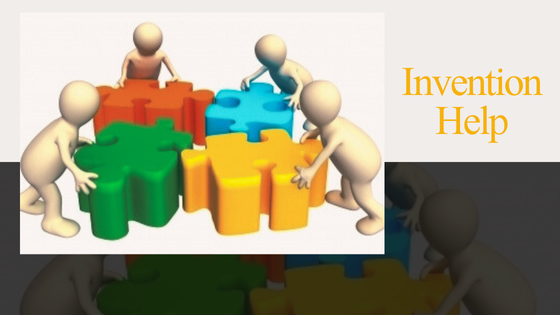
Strategies for an Effective Patent Search
To maximize the effectiveness of a patent search, certain strategies can be employed:
- Use Broad and Narrow Search Terms: Start with broad search terms to capture a wide range of relevant patents, then narrow down using specific terms related to the inventive aspects of your idea.
- Explore Various Databases: Beyond the primary patent databases, look into scientific journals, technical publications, and other sources of potential prior art.
- Consider International Patents: Given the global nature of patents, it’s essential to search international databases to uncover any similar inventions worldwide.
The Importance of an Invention Prototype Model
Another vital aspect to consider during the patent search and application process is the creation of an invention prototype model. A prototype serves multiple purposes:
- Visualization: It transforms abstract concepts into tangible items, making it easier for inventors, investors, and patent examiners to understand the invention.
- Functionality Testing: It allows inventors to test the functionality of their product and make necessary adjustments, which can be crucial in refining the invention.
- Patent Documentation: A detailed prototype can also enhance the quality of the patent application by providing concrete examples of the invention’s functioning, which can be instrumental in securing patent protection.
Conclusion
Navigating the patent search process is a critical step in the journey of bringing an invention to life. With the help of InventHelp, inventors can navigate this complex process more smoothly, ensuring that their innovative ideas have the best chance of securing patent protection. Through comprehensive searches, professional guidance, and strategic insights, InventHelp empowers inventors to confidently take the necessary steps toward patenting their creations.
-
How Can InventHelp Assist with Patent Research and Documentation?
The path to acquiring a patent is dense with critical steps, each demanding meticulous attention. Among these, patent research and documentation stand as pillars of the process, indispensable for the success of your application. InventHelp emerges as an ally in this intricate journey, providing inventors with the tools and expertise to navigate patent research and produce error-free documentation, turning formidable tasks into manageable ones. Let’s see are there pros and cons to using InventHelp?
The Foundation of Patent Research
Patent research, or a patentability search, is the critical first step in the patenting process. It involves comprehensively scouring through existing patents and other published works to assess whether your invention is indeed novel and non-obvious, two of the primary requirements for patentability. This search can be a behemoth of a task, patents are written in highly technical language and exist in vast databases.
This is where InventHelp’s expertise comes into play. They use advanced search tools and have access to extensive patent databases to conduct thorough searches. Their experienced specialists understand the nuances of the United States Patent and Trademark Office’s (USPTO) classifications systems, ensuring that no stone is left unturned. The insights gained from InventHelp’s patent search can inform the application strategy, identifying potential obstacles and shaping the approach to defining your invention’s claims.
Precise Documentation – The Make or Break
Beyond research, the essence of a successful patent application lies in its documentation. The documentation needs to describe every aspect of the invention with such precision and detail that it not only meets the requirements of the USPTO but also stands up against potential infringement in the future. Herein lies a challenge: the complex, technical language required by the USPTO can be daunting even for seasoned inventors.
InventHelp steps in to assist inventors with drafting descriptions, claims, and producing professional illustrations that align with USPTO’s expectations. They know exactly what examiners are looking for and how to portray an invention in the most favorable light. InventHelp ensures that all documentation adheres to the necessary legal standards, which drastically lessens the likelihood of application rejection due to common documentation errors.
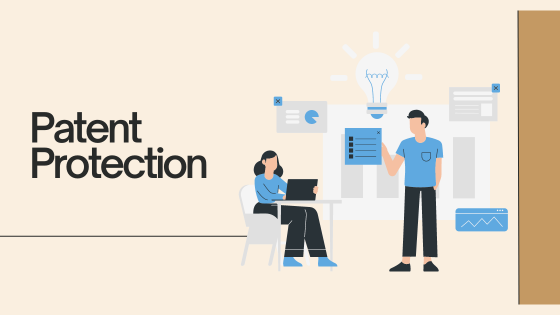
A Guiding Hand Through the Documentation Process
InventHelp’s approach to patent documentation is comprehensive. They guide inventors through every aspect of the application, including:
- Specifications: Detailed descriptions of the invention are crafted, showcasing its uniqueness and functionality.
- Claims: They assist in clearly and concisely drafting the claims that define the protection scope of the patent.
- Drawings: Professional illustrations are produced, which are often crucial for the visualization and understanding of the invention.
Reducing Headaches and Saving Time
By relying on InventHelp’s assistance, inventors can save valuable time that might otherwise be spent in trying to understand perplexing patent requirements. Inventors are spared the headaches that come with the territory when wading through the complex language and structure of patent documentation. Instead, they can entrust this crucial phase to specialists while dedicating their energy and focus to refining their inventions. Now that you learned all these important facts and key questions about InventHelp it is time to take the next step and contact InventHelp.
Conclusion
In conclusion, InventHelp plays a vital role in demystifying and managing the patent research and documentation process. Their depth of knowledge and resources is instrumental in ensuring that an inventor’s application is robust, precise, and stands the best chance of success. With InventHelp, inventors have a powerful partner in transforming their ideas into patented realities, providing peace of mind and a clear path forward in the often impenetrable world of patents.
-
DUI Classes in Scottsdale: An In-Depth Look into Cornerstone’s DUI Education Program
Confronting the aftermath of a DUI charge can be an overwhelming experience. Understanding the road to recovery, and the educational programs in place to guide individuals through this process, is crucial. One such path is through the DUI classes provided by Cornerstone Healing Center in Scottsdale, Arizona.
What Are DUI Classes?
DUI classes are educational programs designed to help individuals understand the risks associated with drunk driving. These classes are typically offered through a court-ordered sentencing or as part of an intervention program. They can also be taken voluntarily by individuals who want to better understand their choices and the consequences of making poor decisions behind the wheel.
A Comprehensive Curriculum
It’s not just about fulfilling legal obligations—these DUI classes are an integral part of self-development and rehabilitation for people dealing with substance abuse challenges. Cornerstone’s curriculum is structured and prescriptive, focusing on various aspects of impaired driving.
The classes cover an extensive range of topics, from understanding alcohol and drug dependency, cognitive restructuring, decision-making models, to inculcating effective coping strategies. They also delve into the legal, physical, and emotional implications of DUI convictions.
Cornerstone’s DUI is one of the best in the area, and the program has been developed over many years in the field. The classes have a strong focus on evidence-based practices, with a curriculum that is constantly updated to reflect current trends in DUI law and treatment.

Encouraging Safety and Responsibility
A significant objective of these classes is the encouragement of safety and responsibility. They aim to educate participants about the potential hazards of driving under the influence, thereby promoting safer road behaviors. Sessions are available both in-person and online to ensure everyone has access to these crucial learning opportunities.
Learning from Personal Narratives
Cornerstone’s DUI classes in Scottsdale bring together individuals, who share a common struggle, in a safe and judgment-free environment. Participants get to share personal experiences, challenges, and victories, in structured group discussions. This acts as a support system, allowing them to derive strength and inspiration from each other’s narratives.
Positive Outcome Stories
Success stories from graduates of Cornerstone’s DUI programs communicate the positive impact these classes can have. Many report a significant change in their mindset and behavioral patterns post completion. By processing how their actions have affected themselves and others, participants often emerge with newfound respect towards road safety and a commitment to improved decision making.
In Conclusion
Navigating the aftermath of a DUI charge doesn’t have to be a journey undertaken alone. DUI classes, such as those offered by Cornerstone Healing Center in Scottsdale, serve as a beacon of light, guiding individuals towards a more responsible and positive path. Through education, personal development, and community support, these programs strive to discourage impaired driving and contribute towards creating safer roads in Arizona.
-
The Importance Of Inventions
Inventions have had a profound impact on the world. From the wheel to the internet, inventions have changed the way we think, work, and live. Inventions come in all shapes and sizes, from small gadgets to life-changing technologies. No matter the size or purpose, inventions have the power to make a lasting impact on the world.
Unleashing the Power of Inventions
From the invention of the wheel to the modern-day computer, inventions have opened up a world of possibilities. They have helped us to explore new ideas and find creative solutions to everyday problems. Inventions have also been a source of inspiration, leading to further innovations and discoveries. By unleashing the power of inventions, we can continue to make the world a better place.
The Benefits of Inventions
Inventions have been beneficial in many ways. They have made many tasks easier, improved our quality of life, and provided us with an abundance of new opportunities. Inventions have also helped us to better understand our environment and the world around us. By studying the effects of inventions, we can better understand the implications of new technologies and use them to our advantage.
Making Your Own Invention
Inventing is an exciting and rewarding experience. It requires creativity, problem-solving skills, and a lot of hard work. With the proper resources and guidance, anyone can create a new invention. Whether you’re looking to make a small gadget or a life-changing technology, the possibilities are endless. With a little bit of effort, you can make your own invention and make a lasting impact on the world.
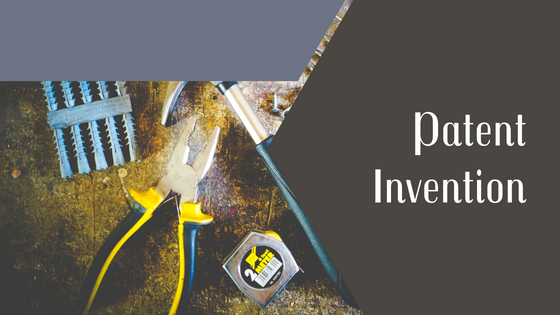
The Future of Inventions
Inventions have been and will continue to be a major force in shaping our world. With the right resources and guidance, anyone can make their own invention and make a lasting impact on the world. As technology advances, the possibilities are endless. We can continue to innovate and create new inventions that will help us solve the problems of today and the future.
What To Do With A New Invention Idea?
If you have a new invention idea, the first thing you need to do is research it. Check out how similar ideas have been received in the past, how much money they made and how successful they were. Then, make sure that your invention is unique and does not infringe on any existing patents. Next, figure out if there are any potential problems with your idea and how you can solve them. Once you’ve done all this work, it’s time to move forward with making your invention a reality.
There are agencies, like InventHelp, that can help you through the process of bringing your idea to life. They have the contacts and knowledge needed to get your invention on store shelves and into peoples’ homes.
Conclusion
Creating and patenting an invention is a rewarding experience. It can also be very lucrative if you do it right. By following the steps outlined above, you’ll find yourself well on your way to becoming a successful inventor.
-
How Do I Get An Invention Idea Turned Into A Product?
If you have an invention idea but don’t know where to start, don’t worry – there’s plenty of help available.
Research Your Idea
Conducting research into your invention idea is a critical first step in the invention process. Research can help you determine the need for your product, its marketability, and if it’s even possible to bring to life. Doing research can also help you to refine the design and identify potential competitors.
File for a Patent
A patent is a form of legal protection that grants you the exclusive right to make, use, and sell your invention. To obtain a patent, you’ll need to file a patent application through the US Patent and Trademark Office. Before you file, make sure you research the patenting process and find a qualified patent agency, such as InventHelp to help you through the process. To get help with invention idea, contact InventHelp today. They will help you turn your ideas into reality.
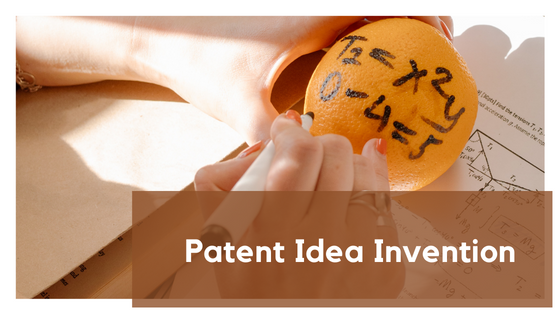
Build a Prototype
Once you’ve done your research and obtained a patent, it’s time to build a prototype of your invention. This will help you to test the feasibility and functionality of your invention and make any necessary improvements. If you need assistance with building a prototype, you can find experts who specialize in invention prototyping.
Market Your Invention
Once your invention is ready to go, you need to start thinking about how to market it. This will require a solid marketing plan, including research into potential customers, developing effective messaging, and identifying potential distribution channels. It’s also important to make sure you have a strong online presence to increase visibility.
Hire InventHelp For Help
InventHelp services are available to help with every step of the invention process. Whether you’re looking for advice or want to take your idea through the entire development process, InventHelp can help. InventHelp has helped thousands of inventors take their ideas from concept to market.
Conclusion
InventHelp is a great resource for inventors who are ready to take their ideas from concept to market. They have extensive experience helping inventors, and they offer a wide range of services that can help you develop your product and bring it to market.
-
Basics About a Birth Certificate
If you want to keep track of your identity, you can use several forms that will help to define who you are. One of the most common forms is the birth certificate. This is a required form that is given to all newborns that are born in the United States, and allows you to know the basics about who you are. If you want to make sure that you are able to keep your identity straight, than knowing what is on a birth certificate, and keeping one in case of any needs ensures that you are able to keep track of your general information.
A birth certificate is typically given to a family before a baby leaves the hospital. On the certificate is the full name of the child that is born, the date and time that they are born and the parent’s name who gave birth. It will also include where you were born, so that your identity can be tracked from this area. The birth certificate is supposed to be kept for years to come in case there is a need to identify who a person is from their birth.
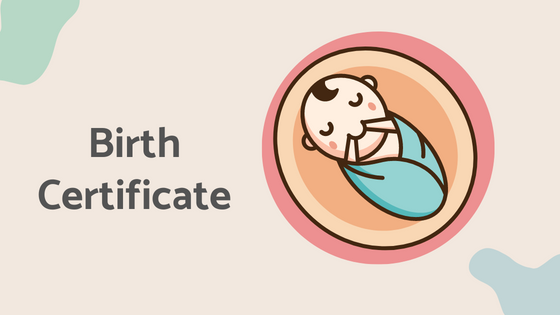
The birth certificate is important to keep in case there is a need to identify who a person is or in case their needs to be specific information given about a person. Because of this, it is important to keep a birth certificate in a safe place. This allows you to have a general set of information for traveling, identifying yourself in a work area or through other means of identification. This is a simple way for others to make sure that you are who you say you are, because of the identity on the certificate. With all that said, let’s see how to get birth certificate Texas?
How To Get A Birth Certificate in Texas?
If you don’t have a birth certificate or if it is lost, damaged, or destroyed, you can apply for a new Texas birth certificate. You must be at least 18 years old to apply and provide proof of your identity. If you are younger than 18 years old, your parent or legal guardian must complete the application with you in person at the Vital Statistics Unit (VSU) closest to where they live.
If you need to obtain a birth certificate, the easiest way is to contact your local health department. However, this process can take some time. You may also want to consider hiring a private company that specializes in expediting the birth certificate process. These companies can often get your document to you within two weeks of submitting your application.
-
Apostille Certification
Apostille certification is a way to certify the authenticity of a document. It’s an internationally recognized form of authentication that lets you ensure that your documents are legally binding and can be used as evidence in all jurisdictions.
Why Do You Need Apostille Certification?
Because it ensures that your documents are not only legally binding but also accepted internationally, you need to have them apostilled if you plan on using them outside of the United States. This applies to documents such as birth certificates, marriage licenses, divorce decrees, and diplomas.
How To Get An Apostille Certification?
The first step is to request the documents you want certified from the issuing authority. This can be done online, by mail or in person at your local courthouse. Before you apply for the document, make sure that it has all of the required information and that it conforms with international standards. Then, visit a notary public who will verify your identity and sign off on your application form.
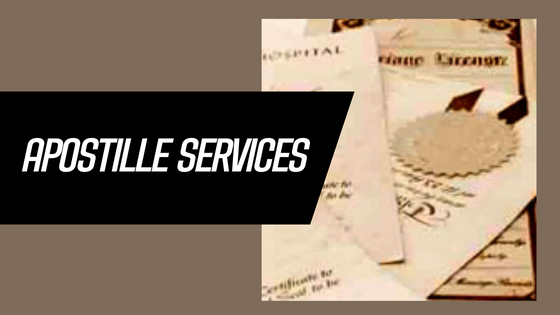
The apostille process is more than just a certification. It ensures that the document is valid in every jurisdiction and can be used as evidence in any legal matter. The apostille process is regulated by the Hague Convention Abolishing the Requirement of Legalization for Foreign Public Documents (1961), which was ratified by 176 countries. In the United States, the Secretary of State is responsible for issuing apostilles.
The process generally involves sending your documents to them and paying a fee. Once they verify that everything is in order, they’ll issue an official stamp or signature on your document that notifies other countries that it has been certified by a government authority in the United States.
Hire Apostille Services For Emergency
If you need an apostille in Austin TX fast, there are number of apostille services that can help. These are companies that have the equipment, knowledge and experience to process your documents quickly. They will provide you with a certified copy of your document that has been legalized by an official government authority in Austin TX as well as an apostille from their headquarters (if applicable).
-
Process Of Getting An Apostille
Apostille is the official certification that a document has been issued by the competent authority of a specific country. It can be used to authenticate all types of documents, such as birth certificates, diplomas and other education certificates, marriage certificates, and death certificates among others.
The Apostille Convention is an international treaty that seeks to standardize the procedure for certifying documents for use in international legal proceedings. This ensures that the documents are accepted in any country that is part of the convention. The convention was signed in 1961 by ten countries and was subsequently ratified by them. Today, there are 112 countries that have acceded to this treaty.
When a document is issued in one of these countries, it is stamped with an Apostille. The stamp certifies that the document has been signed by the appropriate officials and legal requirements have been met. In order to get an apostille, you must first contact the government agency that issues such documents. It will tell you what documents need to be submitted and how they should be formatted.
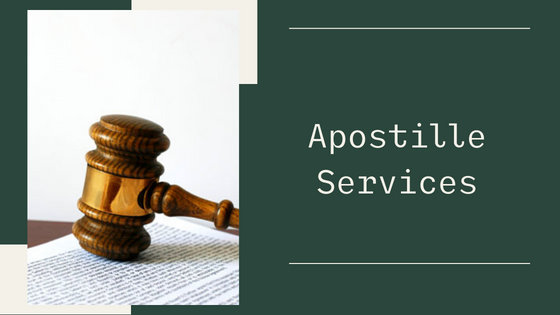
The process usually takes from two weeks to one month, but it will depend on the country that issues the document. You should also ask if there are any special requirements for getting an apostille, such as certain forms or additional paperwork.
The agency will also tell you where to send the documents and how much to pay. Once it has received your documents, it will issue an Apostille Certificate within one month. The certificate should be translated into English by a certified translator and then sent back to the agency with the appropriate fees.
The agency will then issue you with the official document, which must be presented at each embassy or consulate you visit.
Getting An Apostille in Dallas, TX
Obtaining an apostille in Dallas, Texas can be a lengthy process. However, it is important to have the document certified before sending it off to an embassy or consulate. If you need help obtaining an apostille in Dallas you can hire apostille Dallas TX services to help you. The process of getting an apostille in Dallas can take anywhere from one to two weeks, depending on the agency you use. It is important that you do your research so that you can choose the best apostille service provider in Dallas.
-
The Process of Inventing a New Product
An invention is a new idea, or the implementation of an idea. Many inventions are designed to solve a problem or fulfill a need. The process of inventing involves creative thinking, problem solving and research.
Inventions are often developed in order to make life easier for people, but they can also be created for other reasons. For example, inventions can be created for fun or for profit.
Inventions can be physical objects like machines, devices and tools as well as processes and methods such as new ways of doing something or new ways of organizing information.
Innovation is the process of creating new invention ideas and making them happen in real life. Innovation can take many forms such as modifying existing things, creating new products from existing products or creating completely new things that were not previously available.
Innovation is a key driver of economic growth, and it can be found in many different industries. For example, new technologies are constantly being developed and invented to improve the way we communicate, travel and entertain ourselves.
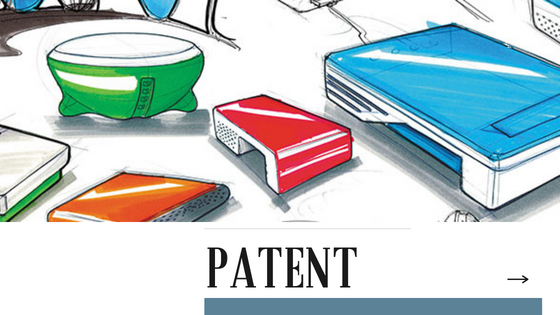
Innovation is important for a company because it allows them to stay ahead of their competitors and provide new products and services that people want. It can also help companies reduce costs by finding better ways of doing things or using fewer resources than they did before.
Importance Of New Invention Ideas
When we think of innovation, we often think of new invention ideas. But innovation doesn’t always involve creating something completely new; it can also mean improving an existing product or process to make it better. For example, when cars were first invented they were very slow and unreliable. Over time, however, car manufacturers have worked on ways to make them faster, more reliable and easier to use while making sure they stay safe for drivers and passengers alike.
The same goes for many other products and services. As technology becomes more advanced, people have to find new ways of doing things so that they can keep up with the times. This is one reason why there are always new inventions coming out, whether it’s a new mobile phone or a better way to clean your house.
There are many reasons why we need to constantly innovate. If we don’t, we will fall behind other countries that are constantly improving their products and services. For example, if a country like China is making cars that have better fuel efficiency than ours, then people will buy those cars instead of buying American ones.
-
Need A New Passport Fast?
The State Department recommends that you apply for a U.S. passport at least three to four months before your international departure date. You can begin the process as early as four months in advance, but depending on your circumstances, you might want to apply even earlier than that.
How Long Does It Take To Get A Passport?
Getting a passport takes anywhere from one week to two months, depending on how quickly you apply and what type of service you choose.
To get a new passport as quickly as possible, choose the “expedited” option when filling out the DS-11 form online or at an application acceptance location. You’ll have to pay extra for this service (which costs an additional $60), but it’s well worth it if you’re traveling within three weeks and can’t wait the regular amount of time for processing. If you don’t need your new passport immediately and can wait about six weeks for processing, choose the regular option instead.

Getting Your Passport Fast
The process of getting a passport can be daunting. The application process itself can take several weeks, and when you’re in a hurry, you may be tempted to turn to less-than-reputable firms that promise fast service.
But it’s important to know what you’re getting into before spending your hard-earned money on a service that could end up costing more than the government’s expedited fees.
Here’s how to get a passport fast:
There are companies that offer services that can get your passport in as little as 24 hours. However, there are catches: These companies require an extra fee over the standard $60 expedited passport fee (or even more). They also will not guarantee delivery within 24 hours. You’ll have to wait until after the weekend for Monday delivery or Tuesday for Tuesday delivery. And if you don’t live near one of their offices, there may be an additional charge for picking up at a UPS store or other location.
-
Provisional Patent: The First Step to Patenting an Idea
The first step to patenting your invention is to come up with a great idea. Inventions can take many forms: a new piece of hardware, software, business process or a new method or system. You don’t need to be an inventor to get started — just a person who has an invent idea that could make money and benefit society.
Inventors can protect their ideas by filing for a provisional patent. This is a patent application that provides legal protection for an idea, but it doesn’t actually issue as a real patent. Instead, the inventor has one year to file for a utility patent, which is the real deal.
Here’s how it works:
1. The inventor files an application with the U.S. Patent Office to cover an invention that hasn’t been made public yet (this is called “secrecy”).
2. The application is kept secret from everyone except those who work at the Patent Office.

3. A full-fledged patent application must be filed within one year of filing the provisional one (or else the provisional becomes invalid).
4. The patent application is reviewed by the U.S. Patent Office, which determines whether or not it’s allowable and how much it will cost to obtain a patent.
5. If all goes well, the inventor receives a utility patent for his idea that provides legal protection for one year from this date (this date is called “issue”).
What Is A Patent?
A patent is a legal document that gives the inventor ideas or products the right to stop others from making, using or selling it. The term “utility patent” is often used to refer to patents on inventions. A utility patent lasts for 20 years from the date of issue (or until another company files a patent application for a similar invention).
-
What Is A Criminal Background Check?
Criminal records checks are a crucial part of the hiring process. The cost of a criminal records check can vary depending on your state, but they usually cost between $10 and $20. Criminal records checks can also be conducted by employers themselves or through third-party companies.
Criminal Background Check
A criminal background check provides information on an individual’s criminal history. These searches typically include:
Arrests, including outstanding warrants and arrests that did not result in convictions
Convictions for felonies and misdemeanors (felonies include murder, rape, robbery, etc.)
Any previous violations of parole or probation requirements
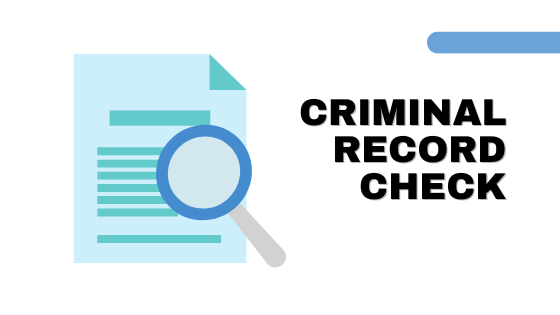
A criminal background check is used to determine if an applicant has any active warrants for his or her arrest that haven’t been served yet. Criminal background checks also provide information about past convictions of felonies and misdemeanors as well as any violations of parole or probation requirements. These checks are most often used by employers and landlords to determine whether an applicant is suitable for a position or rental property.
Do You Need An Apostille For Criminal Background Check ?
You may need an apostille for a criminal background check, depending on the country of your citizenship and whether you’re applying for a passport or other type of travel document. It is best to consult with a professional apostille criminal background check service about that. An apostille is a form of authentication that ensures documents from another country are valid in the country where they’re being used.
-
Who Needs An Apostille?
An apostille is only issued for public documents. It’s a stamp that certifies the authenticity of a public document, and only documents that relate to government or international organizations can be issued an apostille. Documents that are private in nature, such as birth certificates or marriage licenses, will not receive this stamp of approval. If you’re not sure if your document is considered public or private in your country, contact your consulate, they’ll be able to help you figure out if it’s eligible for an apostille.
If you have a document from another country and want to get it legalized here in America, then this process may seem familiar but slightly different from what goes on at home: Instead of receiving an official seal from some kind of government agency or official who verifies its authenticity once everything has been filled out properly (like parents usually do when they sign a child’s driver’s license application), you’ll need someone who specializes in this kind of stuff called “apostilles.”
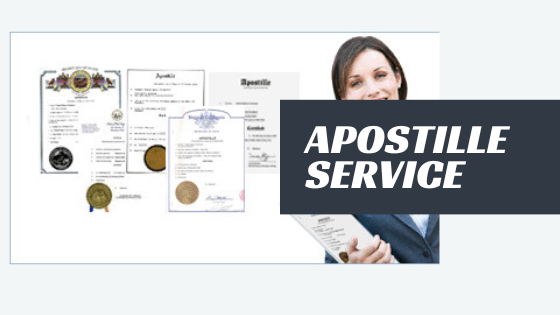
Getting an apostille for a document in Houston, Texas is simple, but it does require some paperwork. You can always hire a professional Houston apostille service to get your documents apostilled.
Here’s how it works:
1. You need to get the original document and its translation into English (if it’s not in English).
2. Then you need to sign the original copy of the document and affix your seal on it.
3. You also need to get two copies of the document notarized. One goes with your application, and one stays with you as proof that you’ve applied for an apostille.
-
The Priority Date
The Priority Date is a very important date in the timescale for patenting a new idea or invention, since it is the date of first filing the patent application describing the idea or invention, at the Intellectual Property Office, and therefore causes a metaphorical clock to start ticking during the lengthy process towards eventual grant of a patent for the invention, which can take up to four and one half years measured from the Priority Date.
Some may argue that the use of the word “idea” is not correct, since an idea is not an invention. However, you must start somewhere, and the establishment of the Priority Date, via the date of filing of the first patent application describing only an idea, even if it is not yet an invention, (i.e. where the patent application is only describing the basic concepts that you have, in the form of an identified need, with only a partial solution to that need) at least shows the world, via your first filed patent application, what it is you are attempting to protect as written on how to file a patent with InventHelp.
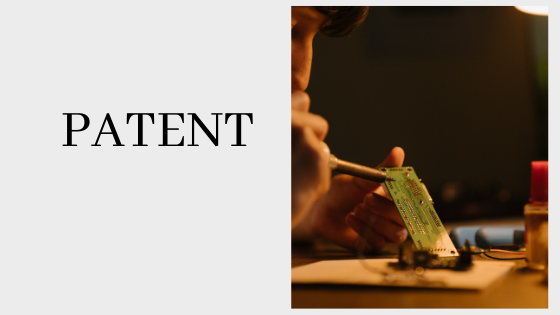
Often, an idea, which is not yet an invention, becomes an invention after development and such development leads to improved patent specifications, which are filed at intervals, in the form of improved patent applications, up to the very last patent application, which must be filed before twelve months have elapsed, measured from the date of filing of the first patent application describing the invention.
When the final, definitive version, of the patent specification describing an invention, is filed as a patent application at the Intellectual Property Office, at no later than twelve months measured from the date of filing of the first patent application a request can be made for this definitive version to be subject to Examination, with all of the previously filed applications associated with it according to their dates of filing as you can see from this how do you patent an idea with InventHelp post.
-
What Is In the Patent?
A patent is an exclusive right that a patent applicant receives to exploit his invention. After filing a patent application, the invention remains secret for 18 months. After that, the content of the patent application is accessible to everyone because the law requires disclosure of the patent application in return for granting a patent. A patent is therefore a right to which obligations are also attached!
Novelty, inventiveness and industrial applicability are the three basic conditions that an invention must meet in order to be patented. And the invention must always be technical in nature. Consult with a patent agency, such as InventHelp, if any confusion – learn more about InventHelp on Kulturehub.
So when an invention concerns a completely new product that is also completely unique, then it is patentable. This also applies to an as yet unknown improvement to an existing product, in which case a patent is also possible. The interpretation of novelty, inventiveness and industrial applicability is broad so that innovative production processes or working methods can fall within patent protection.
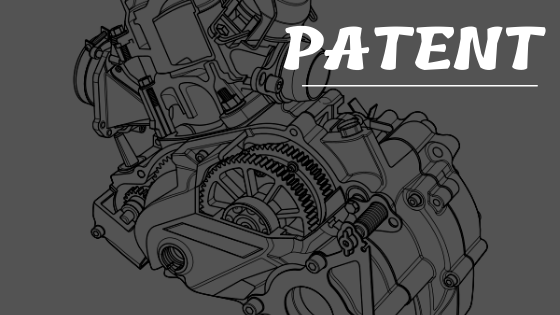
You cannot get a patent on a thought or an idea. A theory or a particular form of service is also not patentable. And when human or animal bodies are the object of a treatment method, that method cannot be protected with a patent.
A patent always contains the name of the inventor and the applicant for the patent. Also, each patent publication must provide a clear description of the invention. Drawings will often also form part of that description for illustration purposes. An important part of any patent application is the claims or claims section. This states exactly what the invention relates to and what the patent applicant wishes to protect. You can hire a patent agency, like InventHelp, for this.
And not to forget, almost 80% of all technical information can be found in the patent literature. Often that information is not published anywhere else, not even in the professional literature. In short, not looking in the patent literature for research or innovation is a missed opportunity!
-
Patent Documents
Even though the content and forms of patent documents depend on the laws of each country, in general terms they have a uniform structure in which the following parts are distinguished:
- First page
- Description
- Claims
- Drawings
First page
The first page of the document contains the basic data of the owner and the inventor, the title of the invention and the technical sector to which it refers (classification). Indicates various dates of importance in the grant process (priority, application, publication) and contains a summary of the invention.
On the first page, the title, the abstract and the codes corresponding to the International Patent Classification are of particular interest, since they allow you to quickly get a first idea of the invention.
The title succinctly but specifically expresses the content of the invention. The summary usually includes an indication of the technical problem raised, the solution provided and its main uses, and may include a figure, formula or diagram. The classification refers to the symbols that the examiner of the patent office responsible for the publication of the document gives to the invention for which protection is sought. These symbols are an essential element to facilitate access to the technical information provided by patent documents, since they allow the patent to be classified solely and exclusively on its technical purpose as explained on https://fingerlakes1.com/2021/07/08/team-up-with-inventhelp-to-take-your-career-to-the-next-level/.
The description
The description is the instrument of disclosure of the patented technology, it should be as a guide for the implementation of the invention.
In addition, the description should be the basis to substantiate the claims. Only what has been described can be claimed and everything claimed must be contained in the description. Everything synthetically contained in the claims must be analytically stated and explained in the description.
The description must meet a series of requirements:
a) It must be clear and complete. Clear and complete enough so that a mid-level subject matter expert or person of the trade can execute it.
b) It must define the technological context of the invention. On the one hand, it must facilitate the understanding and evaluation of the invention and, on the other, it must guide and simplify the search and examination of priorities in the granting procedure.
c) The technological contribution of the invention must be highlighted. It must substantiate the requirements of novelty and inventive step.
d) The language used in the description must be exclusively technical, objective and neutral.
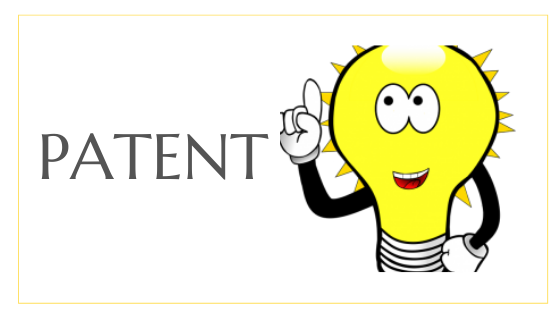
The content and structure of the description includes:
- Title of the invention.
- Indication of the technical sector.
- Summary of the state of the art.
- Explanation of the invention, solution of the technical problem raised and advantages.
- References to the drawings.
- Mode of carrying out the invention.
- Possibilities of application and industrial use.
The claims
The claims are a definition of the invention based on its technical characteristics, which defines the extent of the protection conferred by the patent.
They have a dual purpose: on the one hand, they define the object of the requested protection, clearly demarcating the invention from the prior art; On the other hand, the claims delimit the borders of the legal monopoly, that is, the scope of the protection granted by the patent.
The most common way of writing claims is to subdivide them into two parts: the preamble or generic part, which indicates the object or field of application of the invention, and the characterizing part, which is in a certain way the essence of the invention, since it mentions the characteristic and new characteristics or characteristics of the invention, which is what distinguishes it itself and precisely from the already known state of the art indicated in the preamble.
The drawings
The patent application may contain drawings that are nothing but graphic representations of the object of the invention, although diagrams of process steps and diagrams are also considered as such. Its function is to complete the description, illustrating it graphically so that what has been described can be visualized using words and formulas. It is best to hire a patent agency, such as InventHelp, for help.
If a patent document from the last century is consulted, it can be seen that the content of the document has not changed substantially over time. However, its form has evolved, since effectively, with the implementation of international standards for the presentation, publication and exchange of documents, it has acquired the uniform structure already described.
-
Know Your Legal Representative Before Divorce
Divorce or dissolution of marriage is always painful and disheartening to every one. This is not just a legal process for separation but also a vital decision between married persons where bonds of matrimony end for ever. Presumably couples are confident about their decision this regard and are well known about the consequences. Therefore there is noting much to add except completing the formalities legally and peacefully.
In most of the countries authority or a judge has to sanction the legal process. To talk about USA in 2019, 40% of all marriages ended up as divorce. Factors driving such mutual and legal separation can be plentiful. Some direct factors are there like cohabitation of pair prior to wedding, rare presence in Church etc. In fact there are few un-associated factors like frequency of sex, wealth, race and religious responsibility. However divorce and marriage rate both are in declining stage.
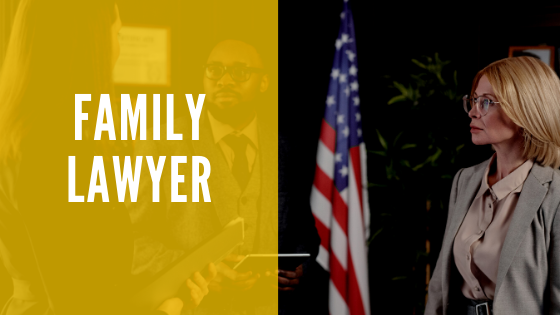
Let’s see what are the benefits of lawyer in divorce?
For people who are planning to seek divorce or already given petition should consult a good divorce lawyer or family lawyer for all legal prosecutions. If both party agrees to a common terms of lawsuits then the process would be far easier, but it happens rare. Hence it is advisable to get in touch with Legal experts in the city who would guide you on types of divorce, their implications, and application process also. You can understand the degree of issues once check past records from your attorney about his clients and the final outcome. Drawing an analysis and analogy on a case basis can provide you exact pathways. One should remember that laws differ to the waiting period before divorce made to be effective. Divorce just cancels the marital status of the partners. In western countries both monogamy and polygamy is allowed. Hence second marriage is quite possible with flair social acceptance. But to enjoy the new life you should have a good divorce attorney with you to keep yourself hassle free from all legal prosecutions.
-
Your Estate Plan
Imagine going in and setting up an estate plan with a lawyer as a young bachelor, still pursuing a college education or just recently graduated. Now imagine five years later, you are married and have a child and another on the way. Your needs in just about every facet of your life are different now than they were five years ago.
This also means of course that the estate plan you set up as a college student is largely irrelevant and you will need to update your estate plan. This is why it is so crucial to hire a qualified and experienced lawyer and to approach that hiring decision with the utmost care. You will be working with that person throughout your entire life and need to be able to get along with them as your life situation changes and your plan needs fluctuate.
Your Estate Planning Lawyer Should Know You
Of course your avocat succession is going to get to know you through working with you throughout your life but your attorney should know you because he or she has worked with clients in similar situations. When looking for a lawyer, talk to them about your situation, where you are at in your life, and your feelings about estate planning.
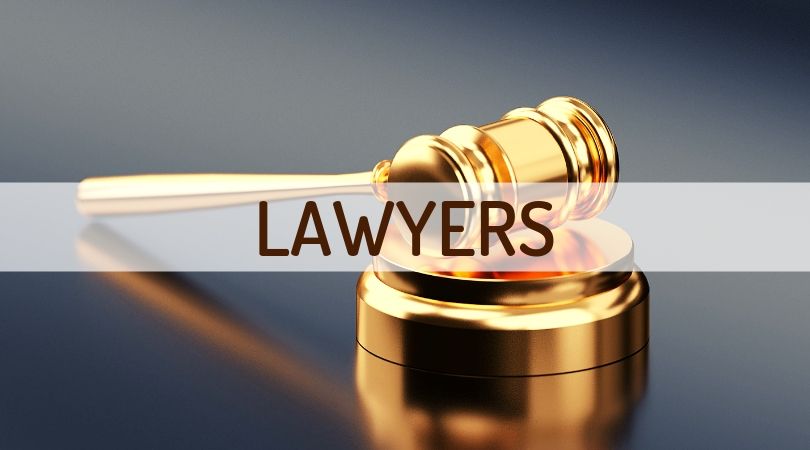
Then ask them to reiterate some of their experience working with clients in similar situations with similar ideas about the estate planning process. This will help you ensure that you hire and continue to work with a lawyer who knows your best interests.
You Might Need Your Lawyer for Other Issues
Finally, estate planning is one area of law that often reaches out into other areas of the law. Make sure that you work with someone who is qualified and experienced to represent you in other matters such as real estate law, tax law, and business law. Finding an attorney who can help you with these other issues may save you money and time, and you have the added benefit of working with an attorney who already knows you and your situation.
